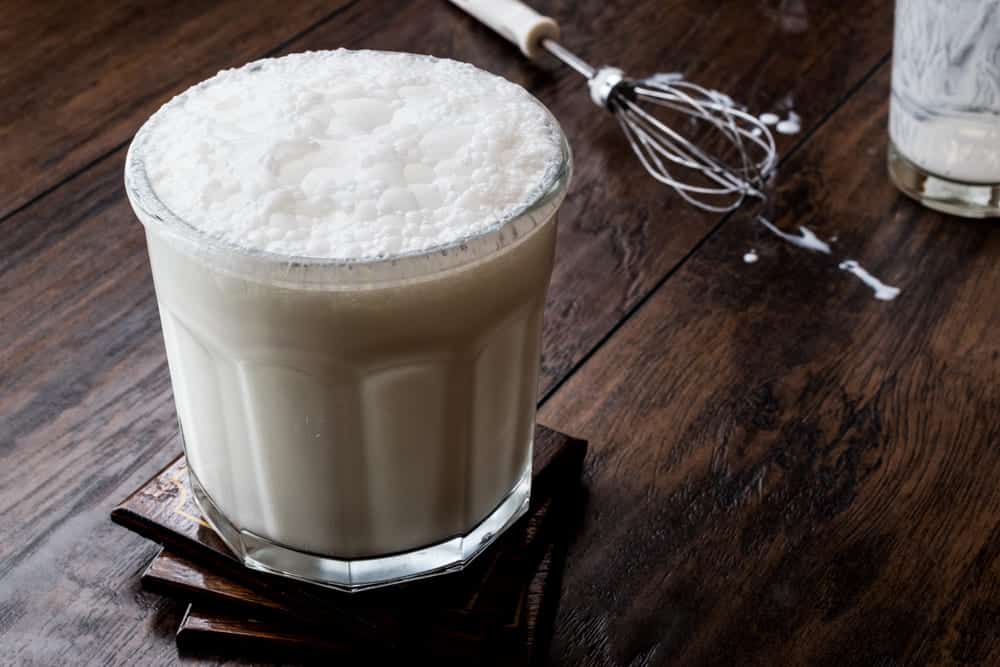
If you’re familiar with baking, you’d know how essential Buttermilk is. Even if you’re not, it’s time you find out about the one single ingredient that makes baking easy.
Buttermilk makes up an important part of most cake recipes also including biscuits, muffins, and pancakes. The slightly acidic nature of Buttermilk properly activates the rising agents like baking powder and baking soda. Buttercream adds unmatched texture and moisture to a recipe. It is almost an irreplaceable ingredient once you get to know its benefits.
You’re mistaken if you think it’s just ordinary milk and butter mixture. Making Buttermilk is trickier than it sounds. You’ll come across two types of Buttermilks. Ordinary Buttermilk or Cultured Buttermilk. Are you wondering if they’re the same thing? Continue reading to get all your answers.
Cultured Buttermilk vs Buttermilk
Cultured Buttermilk
Cultured Buttermilk was first introduced in the early 1900s in the United States. Soon after, cultured Buttermilk was commercially available in most parts of the world. Today, you can easily find it at almost all grocery stores. What makes cultured milk different from normal Buttermilk is its heavy pasteurization.
Once the milk is pasteurized, it is then inoculated with different cultures like Lactococcus Lactis and lactobacillus bulgaricus. These bacteria, along with others, culture the Buttermilk. Once the fermentation begins, the milk is heated and given enough time to settle down.
Cultured Buttermilk has a distinctive tartness to its flavor. This is basically a result of the products that come from fermentation. The pH of the milk drops, which further activates an enzyme called Casein. Casein is responsible for curdling.
Cultured Buttermilk is thick, dense, and slightly sour in comparison to normal Buttermilk. Which makes it ideal for making ice creams and smoothies. It acts as a wonderful tenderizer for meat. Cultured Buttermilk makes great salad dressings mixed with some feta cheese.
Buttermilk
Traditionally butter was churned for days, and the leftover water was called Buttermilk. The butter was usually churned out of cultured cream. Milk was left for hours so all the cream could get separated. This also gave the naturally growing bacteria enough time to grow.
Since artificial bacterial culture was not that common back then, this was the only method to inoculate the milk and ferment it. Even today people use the traditional recipe in some parts of the subcontinent like India, Bangladesh, and Pakistan.
Buttermilk utilizes whole milk in its making and is rich in fat. The fatty component of Buttermilk makes it ideal for substitution as a major fat ingredient. Some pastry chefs use 1 part of fresh butter and 2 parts buttermilk for a richer flavor. Real Buttermilk is sweeter in taste and lighter in weight. Unlike cultured Buttermilk, real Buttermilk is less viscous and easy to integrate into eggs.
Buttermilk makes baked goods like cakes, brownies, cupcakes softer. It adds more shelf-life and a softer finish. Pancakes made with buttermilk are fluffier and who doesn’t like fluffier pancakes?
Can you interchange Real Buttermilk with Cultured Buttermilk?
The answer to that is yes and no. While most pastry chefs would never take that big of a risk. Other home bakers believe it’s perfectly fine. Most times, you can hardly tell the difference. If you’re adding Buttermilk to a recipe to get a soft, moist texture. Either of the two would do the job. However, if you’re using Buttermilk for other purposes, it’s better if you stick to the requirements of the original recipe.
How to make your own Buttermilk?
Let’s say you’re in a hurry, and you need Buttermilk for a recipe. You neither have the time to wait for natural Buttermilk to churn out of butter. Or run to the grocery store to get some Cultured Buttermilk. In that case, you can always make your Buttermilk. You would need a cup of milk, a tablespoon of fresh lemon juice. If you can’t get lemon juice, you can always substitute it with a tablespoon of vinegar.
Add the lemon juice/vinegar to the milk. Give it a good mix. Make sure to leave it on the kitchen counter for 15-20 minutes. Your Buttermilk would be ready to use when you can notice the milk curdling. Once it curdles, you can use it for up to 12 hours.